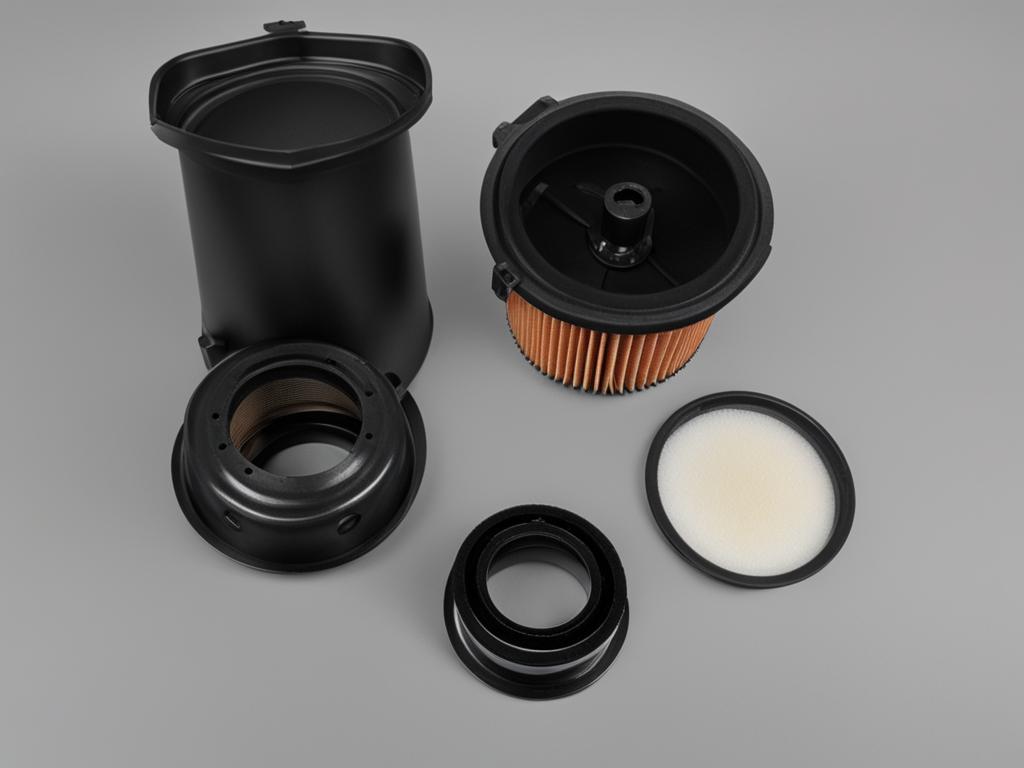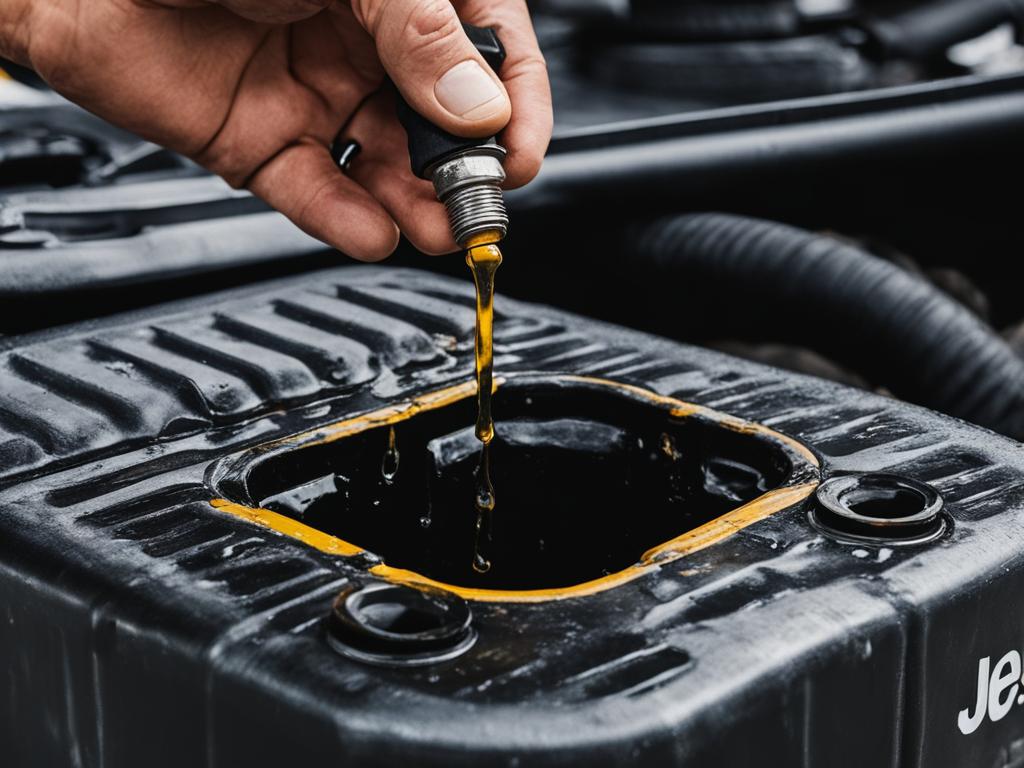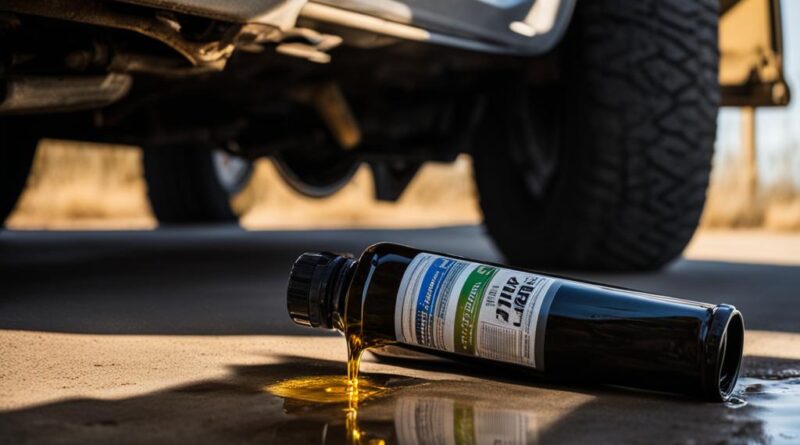Jeep Wrangler Oil Change Guide & Tips
Changing the engine oil in a Jeep Wrangler is a crucial part of its maintenance routine. By performing regular oil changes, you can ensure that your Jeep’s engine stays healthy and performs at its best. In this guide, we will provide you with step-by-step instructions and helpful tips for a successful oil change.
During an oil change, you have control over the type of oil and oil filter used, giving you the opportunity to choose the best options for your Jeep Wrangler. Additionally, the oil change process allows for a thorough inspection of other components, ensuring that everything is in proper working order.
Key Takeaways:
- Performing regular oil changes is essential for maintaining the performance and longevity of your Jeep Wrangler’s engine.
- By changing the oil yourself, you have control over the type of oil and filter used, ensuring optimal performance.
- The oil change process provides an opportunity to inspect other parts of your Jeep Wrangler and address any potential issues.
- Follow the manufacturer’s recommendations for oil type and change intervals to ensure proper engine lubrication and protection.
- Dispose of used oil responsibly by taking it to a recycling center or returning it to an auto parts store.
Selecting the Right Oil for Your Jeep Wrangler
When it comes to selecting the right oil for your Jeep Wrangler, it’s crucial to consider the manufacturer’s recommendations and the specific needs of your vehicle. For JK Wranglers equipped with the Pentastar 3.6L engine, Mopar recommends using either 5W-20 or 5W-30 oil, depending on the expected driving conditions. While both options are suitable, 5W-20 oil is generally recommended as it offers better fuel economy and optimized lubrication during cold starts.
It’s essential to ensure that the oil you choose meets or exceeds Chrysler Materials Standard MS-6395. This specification guarantees the oil’s quality and ensures compatibility with your Jeep’s engine. While Mopar, Pennzoil, and Shell are reputable and recommended brands, other oils that meet the manufacturer’s specifications will work just as well.
Recommended Oil Viscosity for Different Conditions
The recommended oil viscosity for your Jeep Wrangler varies depending on the climate and driving conditions you typically encounter. Here’s a breakdown:
| Driving Conditions | Recommended Oil Viscosity |
|---|---|
| Normal driving in moderate temperatures | 5W-20 |
| Severe conditions (extreme cold or hot weather, off-roading, towing) | 5W-30 |
Please refer to your owner’s manual for specific oil viscosity recommendations based on your driving situation.
Remember, regularly changing your Jeep Wrangler’s engine oil using the right oil filter and engine oil is essential to maintain optimal performance and extend the longevity of your vehicle.
The Oil Change Process for 2012-2018 JK Wranglers
Changing the oil in your Jeep Wrangler is an important part of its routine maintenance. In this section, we will walk you through the step-by-step process for changing the oil in 2012-2018 JK Wranglers. By following these instructions, you can ensure that your Jeep’s engine stays in optimal condition and performs at its best.
Before You Begin
Before starting the oil change process, it is important to take certain precautions to ensure your safety and the safety of your vehicle. Here’s what you need to do:
- Park your Jeep on level ground to ensure stability during the oil change.
- Engage the parking brake to prevent any unintended rolling.
- Place wheel chocks behind the rear wheels as an additional safety measure.
The Oil Change Process
Now that you’ve taken the necessary precautions, you’re ready to begin the oil change process. Follow these steps:
- Start by warming up the engine for a few minutes. This helps the oil flow more easily.
- Remove the engine cover to gain access to the oil filler cap.
- Pro tip: To make sure you’re using the recommended oil for your Jeep Wrangler, refer to the owner’s manual or check with your local Jeep dealer.
- Place a drain pan underneath the vehicle to catch the oil as it drains.
- Using a 13mm socket, remove the oil plug located on the underside of the engine.
- Allow the oil to fully drain into the drain pan.
- Pro tip: While the oil is draining, take the opportunity to inspect the oil plug for any signs of damage or wear. If necessary, replace it with a new one.
- Using a 24mm socket, remove the old oil filter from its housing.
- Pro tip: It is recommended to replace the oil filter with a new one during each oil change for optimal performance.
- Before installing the new oil filter, lubricate the rubber gasket with a thin film of oil.
- Hand tighten the new oil filter into place, being careful not to overtighten.
- Pro tip: If you’re unsure about the correct torque specification for your oil filter, consult the owner’s manual or contact your local Jeep dealer.
- Once the oil has finished draining, reattach the oil plug and tighten it to the specified torque setting.
- Refill the engine with the recommended amount of oil. This information can be found in the owner’s manual.
- Replace the oil filler cap.
- Start the engine and let it run for a few minutes to circulate the new oil.
- Check for any leaks around the oil filter and oil plug.
And that’s it! You’ve successfully changed the oil in your 2012-2018 JK Wrangler. Regular oil changes using the recommended oil for your Jeep Wrangler will help ensure the longevity and optimal performance of your vehicle.
Image:

The Oil Change Process for 2018 and Newer JL Wranglers
For 2018 and newer JL Wranglers with the 3.6L Pentastar V6 engine, the oil change process is quite similar to the older generation JK Wranglers. Follow these steps to change the oil in your JL Wrangler:
-
Park the Jeep on a level surface to ensure accurate oil measurement. Start the engine and let it run for a few minutes to warm up the oil, making it easier to drain.
-
Find the oil drain bolt underneath the vehicle. It is typically located on the oil pan. Place a drain pan beneath the bolt to catch the draining oil.
-
Using a suitable wrench or socket, carefully remove the drain bolt and allow the old oil to drain completely into the drain pan. Be cautious as the oil may still be hot.
-
While the oil is draining, locate the oil filter cap, which is typically located near the top of the engine. Remove the cap in a counterclockwise direction. Once removed, take out the old oil filter.
-
Before installing the new oil filter, lubricate the O-ring with a small amount of oil to ensure a proper seal. Insert the new filter into the filter housing and tighten the cap to the specified torque setting.
-
Once the oil has finished draining, reinstall the drain bolt and tighten it to the recommended torque specification. Be careful not to overtighten.
-
Now it’s time to add fresh oil to the engine. Refer to your owner’s manual or consult with a trusted mechanic to determine the recommended oil type and quantity for your specific JL Wrangler.
-
Using a funnel, pour the new oil into the oil filler port. Be sure to pour it slowly and carefully to avoid spills and overfilling. Check the oil level using the dipstick and add more if necessary.
-
Once you’ve added the correct amount of oil, replace the oil filler cap and tighten it securely. Give the engine a few moments to allow the new oil to settle.
-
Lastly, reset the oil change reminder on your JL Wrangler if needed. Consult your owner’s manual for specific instructions on how to reset the reminder.
Following these steps will ensure that your 2018 and newer JL Wrangler receives a proper oil change, promoting optimal engine performance and longevity.
Comparison of Oil Change Process for JK and JL Wranglers:
| Oil Change Process | JK Wranglers (2012-2018) | JL Wranglers (2018 and newer) |
|---|---|---|
| Engine Warm-up | Warm up the engine before draining the oil. | Warm up the engine before draining the oil. |
| Draining the Oil | Remove the drain plug using a 13mm socket. | Remove the drain bolt located on the oil pan. |
| Replacing the Oil Filter | Remove the oil filter using a 24mm socket and replace it with a new one. | Remove the oil filter cap, replace the filter, and tighten the cap securely. |
| Refilling with Fresh Oil | Fill the engine with the recommended amount of oil. | Fill the engine with the recommended amount of oil. |
| Resetting the Oil Change Reminder | Reset the oil change reminder using the vehicle’s controls. | Reset the oil change reminder using the vehicle’s controls. |
Tips for a Successful Oil Change
Performing an oil change for your Jeep Wrangler is a straightforward task that can be done at home with the right tools and knowledge. To ensure a successful oil change, follow these tips:
- Refer to the owner’s manual: Always consult your Jeep Wrangler’s owner’s manual for specific instructions and specifications regarding the oil change process.
- Warm up the engine: Before beginning the oil change, run your Jeep’s engine for a few minutes to warm up the oil. This will help the oil flow more easily when draining.
- Use proper safety precautions: Prioritize your safety by chocking the wheels to prevent accidental movement and wearing gloves to protect your hands from hot oil and potential spills.
- Dispose of used oil responsibly: After completing the oil change, it’s essential to dispose of the used oil properly. Take it to a local recycling center that accepts used motor oil, as improper disposal can harm the environment.
- Reset the oil change indicator: Don’t forget to reset the oil change indicator on your Jeep’s dashboard to ensure accurate maintenance intervals. Follow the instructions in the owner’s manual to complete this step.
By following these tips, you can confidently perform an oil change for your Jeep Wrangler, ensuring optimal performance and longevity for your engine.

Note: Always prioritize safety and refer to your vehicle’s specific manual for accurate instructions.
Recommended Tools for an Oil Change
To perform an oil change on your Jeep Wrangler, you will need a few tools. These include:
- A ratchet
- Sockets (13mm and 24mm)
- An oil filter wrench (optional)
- A drain pan
- Shop towels or paper towels
- A funnel
While not necessary, additional helpful tools include rubber gloves and jack stands for better access to the underside of the vehicle.
Here is a table summarizing the recommended tools for an oil change:
| Tool | Description |
|---|---|
| Ratchet | A tool used for tightening and loosening bolts and nuts. It allows for easy removal of the drain plug during the oil change. |
| Sockets | Used in conjunction with the ratchet, the 13mm socket is often needed to remove the oil plug, while the 24mm socket is used to remove the oil filter. |
| Oil Filter Wrench (optional) | If your oil filter is difficult to remove by hand, an oil filter wrench can provide extra leverage and make the task easier. |
| Drain Pan | A container placed underneath the vehicle to catch and store the old oil during the draining process. |
| Shop Towels or Paper Towels | Used for cleaning up any spills or drips during the oil change process. |
| Funnel | A device that helps you pour fresh oil into the engine without spilling. |
| Rubber Gloves | Although not necessary, wearing rubber gloves can protect your hands from any oil or dirt during the oil change. |
| Jack Stands | If you have them available, jack stands can provide extra stability and safety when working under the vehicle. |
Having these tools on hand will make the oil change process easier and more efficient.
Oil Change Interval Recommendations
The recommended oil change interval for a Jeep Wrangler can vary depending on driving habits, conditions, and personal preferences. While the old 3,000 mile rule was common, newer engines and oil blends allow for longer durations between changes. The Jeep manual suggests an oil change every 8,000 miles or six months, but factors such as driving conditions and off-road use can affect this interval. It is important to follow the factory recommendations and not exceed 10,000 miles between oil changes.
Cleaning Up and Disposing of Used Oil
After completing the oil change for your Jeep Wrangler, it is important to clean up any spills or drips and properly dispose of the used oil. This ensures the safety of the environment and follows best practices. Here are the steps to effectively clean up and dispose of the oil:
- Use shop towels or paper towels to wipe up any oil residue on the ground or around the oil drain area.
- Dispose of the used towels in a proper waste container designated for oil-contaminated materials.
- Place the used oil filter in a plastic bag to prevent any remaining oil from leaking and dispose of it in accordance with local regulations.
- Collect the used oil in a suitable container, such as an oil drain pan or a sealed plastic jug.
- Take the used oil to a recycling center or return it to an auto parts store that accepts used oil for proper disposal.
Remember, it is crucial not to throw the used oil in the trash or pour it down the drain as it can harm the environment and water supply. By responsibly cleaning up and disposing of the used oil, you play a vital role in protecting the environment and ensuring the safety of your community.

Quote:
The proper disposal of used oil is essential to safeguard our environment and prevent pollution. By following the correct procedures, we can minimize the impact and promote a cleaner, healthier planet for future generations.
Tips:
- Always have absorbent materials, such as shop towels or paper towels, on hand to quickly clean up any oil spills or drips.
- Check with your local municipality or recycling center for specific guidelines on the proper disposal of used oil and oil-contaminated materials.
- If you are unsure about the nearest recycling center or where to dispose of used oil, contact your local auto parts store or mechanic for guidance.
Safety Note:
When handling used oil, it is important to wear protective gloves and avoid direct skin contact. Used oil may contain harmful substances and should be handled with caution.
| Step | Description |
|---|---|
| 1 | Use shop towels or paper towels to wipe up any oil residue on the ground or around the oil drain area. |
| 2 | Dispose of the used towels in a proper waste container designated for oil-contaminated materials. |
| 3 | Place the used oil filter in a plastic bag to prevent any remaining oil from leaking and dispose of it in accordance with local regulations. |
| 4 | Collect the used oil in a suitable container, such as an oil drain pan or a sealed plastic jug. |
| 5 | Take the used oil to a recycling center or return it to an auto parts store that accepts used oil for proper disposal. |
Resetting the Oil Change Indicator
After an oil change, it is important to reset the oil change indicator to ensure accurate maintenance intervals. The process for resetting the indicator can vary depending on the Jeep model and year. In general, it involves the following steps:
- Turn the ignition switch to the ON position without starting the engine.
- Navigate to the Oil Life display in the vehicle information menu.
- Follow the instructions to reset the gauge to 100%.
If the indicator is still present after starting the vehicle, it may not have been properly reset and the process should be repeated.

EXAMPLE TABLE
| Year | Model | Resetting Process |
|---|---|---|
| 2021 | Jeep Wrangler JL | 1. Turn ignition to ON position 2. Navigate to Settings menu in the information display 3. Select Vehicle Information 4. Select Oil Life Reset 5. Follow on-screen prompts to reset indicator |
| 2018 | Jeep Wrangler JK | 1. Turn ignition to ON position 2. Press and hold the MENU button until the oil life display appears 3. Release the MENU button, then press and hold it again for a few seconds 4. The oil life percentage will reset to 100% |
| 2015 | Jeep Wrangler Unlimited | 1. Turn ignition to ON position 2. Press the MENU button until “Vehicle Info” is displayed 3. Use the UP or DOWN arrow buttons to scroll to “Oil Life” 4. Press and hold the RESET button for approximately 3 seconds 5. The oil life percentage will reset to 100% |
Importance of Regular Oil Changes for Jeep Wranglers
Regular oil changes play a crucial role in maintaining the performance and longevity of your Jeep Wrangler’s engine. Engine oil serves as a vital lubricant for the internal components, reducing friction and wear. It also helps prevent the formation of harmful sludge and keeps the engine clean, ensuring optimal functioning.
By adhering to the recommended oil change intervals, you provide your Jeep’s engine with the necessary protection and ensure it operates at its best. Neglecting regular oil changes can have serious consequences, including engine damage, decreased performance, and even expensive repairs.
Therefore, it’s essential to make oil changes a priority in your Jeep Wrangler’s maintenance routine. By regularly replacing the oil with the appropriate type and following the manufacturer’s guidelines, you can effectively safeguard your engine and keep it running smoothly for years to come.
Conclusion
Performing an oil change on your Jeep Wrangler is a crucial part of its maintenance routine. With the right tools and information, this simple task can be easily done by anyone. By following the steps outlined in this guide and using the recommended oil and filter, you can ensure that your Jeep’s engine remains properly lubricated and protected.
Regular oil changes are vital for maintaining the performance and longevity of your Jeep Wrangler. By making oil changes a priority in your maintenance routine, you can prevent engine damage, decrease the risk of costly repairs, and keep your Jeep running smoothly for years to come.
Take control of your Jeep’s maintenance by mastering the oil change process. With the knowledge and skills to perform this essential task, you can have peace of mind knowing that your Jeep is operating at its best. So, don’t overlook the importance of regular oil changes and include them in your Jeep Wrangler’s maintenance plan.
FAQ
What is the recommended oil change interval for a Jeep Wrangler?
The recommended oil change interval for a Jeep Wrangler can vary depending on driving habits, conditions, and personal preferences. While the Jeep manual suggests an oil change every 8,000 miles or six months, factors such as driving conditions and off-road use can affect this interval. It is important to follow the factory recommendations and not exceed 10,000 miles between oil changes.
How do I select the right oil for my Jeep Wrangler?
When selecting the oil for your Jeep Wrangler, it is important to consider the manufacturer’s recommendations. For JK Wranglers with the Pentastar 3.6L engine, Mopar recommends using either 5W-20 or 5W-30 oil, depending on the expected driving conditions. It is also important to ensure that the oil you use meets or exceeds Chrysler Materials Standard MS-6395. While Mopar, Pennzoil, and Shell are recommended brands, other oils that fit the specifications will work as well.
How do I change the oil in a 2012-2018 JK Wrangler?
To change the oil in a 2012-2018 JK Wrangler, start by parking the Jeep on level ground and warming up the engine. Remove the engine cover and the oil filler cap. Place a drain pan underneath and remove the oil plug using a 13mm socket. While the oil is draining, remove the oil filter using a 24mm socket and replace it with a new one. Reattach the oil plug and tighten it, then refill the engine with the recommended amount of oil. Finally, start the engine and check for any leaks.
How do I change the oil in a 2018 and newer JL Wrangler?
To change the oil in a 2018 and newer JL Wrangler, start by parking the Jeep on a level surface and warming up the oil. Remove the drain bolt and catch the draining oil in a pan. Next, remove the oil filter cap and replace the old filter with a new one, lubricating the O-ring with oil. Reinstall the filter and cap, then fill the engine with the recommended amount of oil and reset the oil change reminder.
What are some tips for a successful oil change in a Jeep Wrangler?
Some tips for a successful oil change in a Jeep Wrangler include referring to the owner’s manual for specific instructions, warming up the engine before beginning the oil change, using proper safety precautions, such as chocking the wheels and wearing gloves, disposing of the used oil responsibly, and resetting the oil change indicator to ensure accurate maintenance intervals.
What tools do I need for an oil change in a Jeep Wrangler?
To perform an oil change on a Jeep Wrangler, you will need a ratchet, sockets (13mm and 24mm), an oil filter wrench (optional), a drain pan, shop towels or paper towels, and a funnel. Additional helpful tools include rubber gloves and jack stands for better access to the underside of the vehicle.
How do I properly clean up and dispose of used oil after an oil change?
After completing an oil change, it is important to clean up any spills or drips and properly dispose of the used oil. Use shop towels or paper towels to wipe up any oil residue and clean the surroundings. Do not throw the used oil in the trash; instead, take it to a recycling center or return it to an auto parts store for proper disposal.
How do I reset the oil change indicator after an oil change?
The process for resetting the oil change indicator can vary depending on the Jeep model and year. In general, it involves turning the ignition switch to the ON position without starting the engine, navigating to the Oil Life display in the vehicle information menu, and following the instructions to reset the gauge to 100%. If the indicator is still present after starting the vehicle, it may not have been properly reset and the process should be repeated.
Why are regular oil changes important for Jeep Wranglers?
Regular oil changes are crucial for maintaining the performance and longevity of a Jeep Wrangler’s engine. Engine oil lubricates the internal components, helps reduce wear, prevents the formation of sludge, and keeps the engine clean. By changing the oil at the recommended intervals, you ensure that the engine is properly protected and operating at its best. Neglecting regular oil changes can lead to engine damage, decreased performance, and potential costly repairs.




